Making Wild-Fermented Meju
A deep dive into the mother of Korean bean pastes.
Hello friends,
Last week I dove into the deep end of ferments and made some meju, the wild-fermented mother starter behind Korean bean pastes like gochujang and doenjang. Guk ganjang, Korean soup soy sauce, is also produced as a byproduct of this process. Two products for one method—I’m sold. If you’ve had spicy tteokbokki, or any kind of Korean stew, you’ve most likely tasted these umami-rich bean pastes before.
What is Meju?
Meju is a wild-fermented starter made from steamed and mashed soybeans. The soybean mash is shaped into blocks, hung outside, and dried with rice straw for several weeks. Throughout the drying process, the blocks of soybean mash will harden and slowly crack, naturally attracting mold and bacteria from the rice straw which will slowly innoculate the blocks from the outside in. After several months of drying in the cold winter sun, the meju is washed, dried, and placed into a saltwater brine with chilies and charcoal, and left to ferment for a year or longer. The resulting liquid from this brining process turns to guk ganjang, a prized variety of Korean soy sauce used to season soups and is an integral element of Hansik, or traditional Korean cuisine.
Doenjang vs. Miso
After a long soak in the brine, the bean blocks have softened into a mash and are packed into clay fermentation pots known as onggi, where it will continue to ferment for a few months up to a few years. The resulting paste is known as doenjang, a deeply umami, slightly bitter, and funkier version of its Japanese cousin, miso. However, unlike most Japanese-style ferments, meju is wild-fermented, meaning that it is naturally inoculated from the straw that is hung next to it. As a result, meju blocks are hosts for a wide variety of bacteria and fungi, and while they often contain similar strains of aspergillus oryzae and sojae found in Japanese miso and soy sauce, meju’s diverse microbial and fungal colonies give it a characteristically bold funk and flavor. Japanese miso by contrast, even in the most artisanal methods, follow more controlled processes of intentional inoculation where mold spores are added to whole, cooked beans and other grains. While I haven’t had time to dig further into its complex history, most East and Southeast Asian ferments with the exception of Japan tend to involve wild fermentation or back slopping—adding a bit of starter from your previous batch into new batches of ferments—rather than direct inoculation through the addition of mold spores. As far as I’ve heard, this difference has to do with the patenting koji mold strains and state prohibition of sake production at home in an effort to bolster the sake industry in Japan, but I haven’t had the time to dig further into these rumors. A topic that is definitely worth looking into in the future.
Gochujang
To make the doenjang’s chili-laden sister, gochujang, the process is a bit more involved. Keep in mind that while we often might think of Korean food as a spicy cuisine, chili peppers weren’t introduced to Korea until the 16th century by Portuguese traders. Before that, most likely either black pepper or Japanese prickly ash, a cousin of Szechuan peppercorns, were used to flavor Korean pepper pastes.
While meju for doenjang is made from a mash of 100% soybeans, traditional meju blocks for gochujang usually contain a mixture of glutinous rice, barley, or other starch-rich grains. Why include an extra source of starch? For sweetness, of course—aspergillus molds produce a whole host of enzymes that are responsible for saccharification, most notably amylase. Adding rice or additional sources of carbohydrates to be broken down into simple sugars during the fermentation process adds a caramel-type sweetness to gochujang that adds balance to spicy chilies. Additionally, using enzymatic-rich barley malt or barley malt rice syrup (ssal jocheong) is also common in gochujang making. Unfortunately, industrial gochujang often opts to use glucose, which adds a similar sticky consistency and sweetness to the gochujang paste while losing the complex flavor of malted grain.
All that being said, here is a nice video of a contemporary gochujang producer explaining the process. In contrast to the salt-brined doenjang, meju blocks are simply ground up into a fine powder called mejugaru before being added to the mixture of glutinous rice, ground chilies, and barley malt or barley malt rice syrup before being placed in clay pots for fermentation. Most Koreans who still make their own gochujang at home skip the meju-making process entirely since mejugaru powder is commercially available, making it easy to mix up with some gochugaru chili flakes and a bit of rice syrup without the months-long drying process of making meju from scratch.
Making Meju
Despite all of this detailed explanation, meju is quite simple to make. Here is a necessary disclaimer though—wild ferments are exactly that—wild. If you haven’t had much experience with other ferments before, meju is not the place to start. There are aspergillus strains that can be quite toxic to humans, and of course, bacteria that can make us sick. So there is risk involved since we let the soybean mash attract various colonies of mold and bacteria on its own rather than inoculating them from the start with the exact mold strain that we want. Using sanitized equipment, working on sanitized surfaces, and drying out the meju blocks with plenty of cold air (only attempt while the weather will still be relatively cool for the next six weeks), and hanging them in a highly-ventilated area is critical. With that in mind, proceed:
Meju
Ingredients
1 kilo of soybeans, preferably organic
Some straw (rice straw or hay works as well)
Equipment
Cotton string, a heated blanket or heating pad, a cardboard box, a food processor or a potato masher
Step 1
Soak 1 kilo of soybeans overnight in cold water. The next day, cook the beans on high in a pressure cooker for about 15 minutes. Or steam or boil accordingly. What you’re looking for is to be able to easily mash the beans between two fingers, but not so cooked that they start to absorb water and become wet rather than fluffy when mashed.
Step 2
Strain the beans. Working in batches, roughly chop the cooked soybeans in the food processor or with the potato masher. The mixture should be a rough paste, with some soybean halves still visible. I blended half the mixture into a finer paste and then the remaining half with just a few pulses to make a coarse texture. Split the soybean mash into thirds by weight and wash your hands well before taking each third and patting it together with your hands. Compress each third into a tight ball, patting and squishing the mixture in on itself to squeeze out any air. Then take each ball and drop it onto a flat and sanitized surface, rotating the form and repeating on six sides until a rough rectangular block forms.
Step 3
Dry out the meju blocks over the course of 3-4 days by placing them on a parchment-lined tray on top of a heated blanket or seedling mat. No matter the heat source, you want them to dry out slowly, otherwise, very large cracks will form on the surface of the blocks and compromise their structural integrity. Rotate the blocks once or twice a day to dry out from a different side. If you see very large cracks forming on the blocks, place a clean towel or blanket between the tray and the heating source to insulate them further if the heat is too direct.
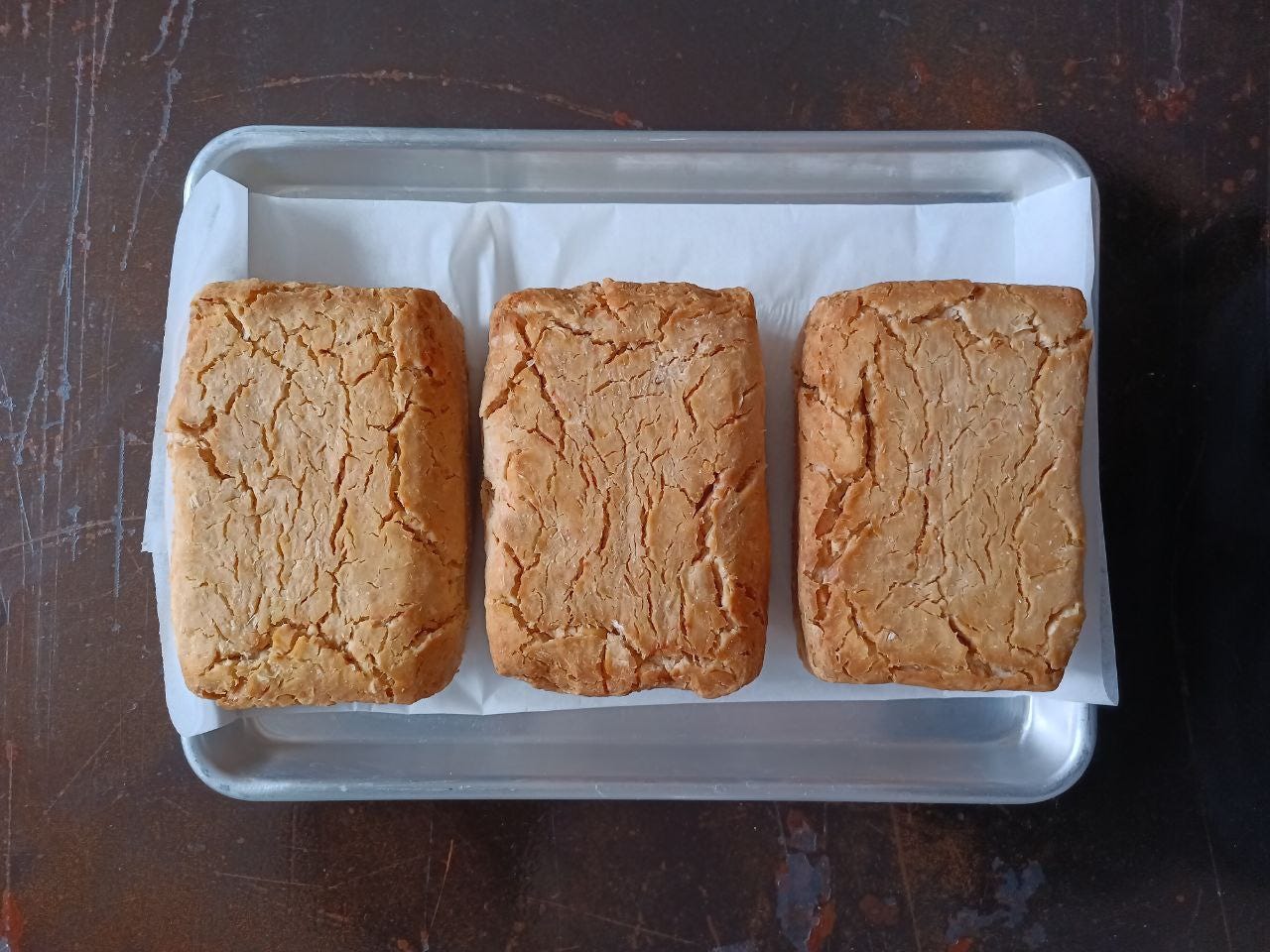
Step 4
Once the blocks are dry enough on the outside to not fall apart easily while handling, use clean hands to tie them with cotton string (or rice straw, if you can find long enough pieces to tie them together to form a rope).
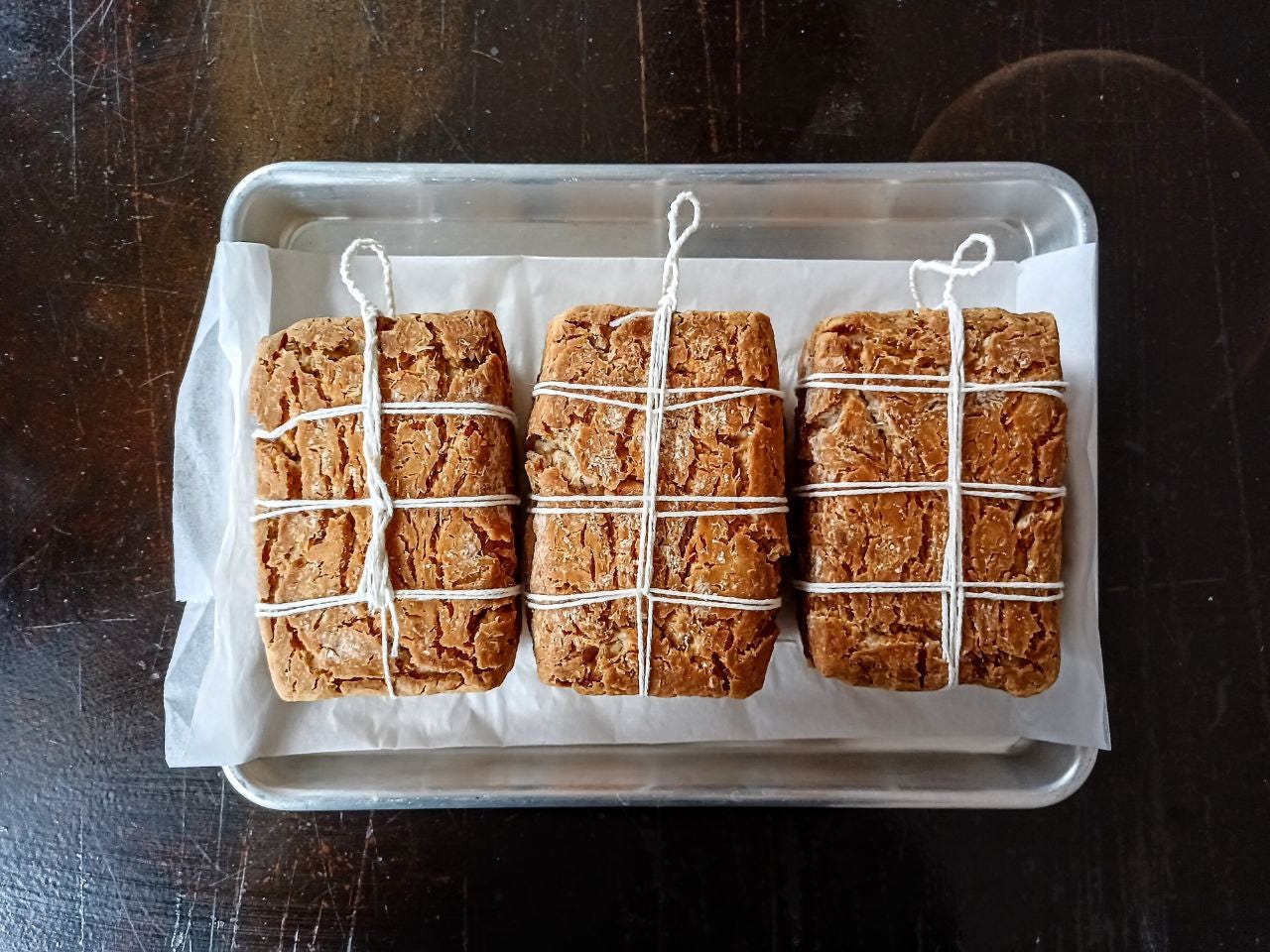
Step 5
Hang the meju outside if you have a rain-protected area where they can be exposed to sunlight and lots of ventilation. It’s customary to also pack them with straw if you have open plastic net-mesh bags that you can hang bunches of straw in, or simply put them in an area close to bundles of straw. I live in an apartment so I just hung them near my window which is kept open a fraction most of the time. Now we wait—6 weeks.
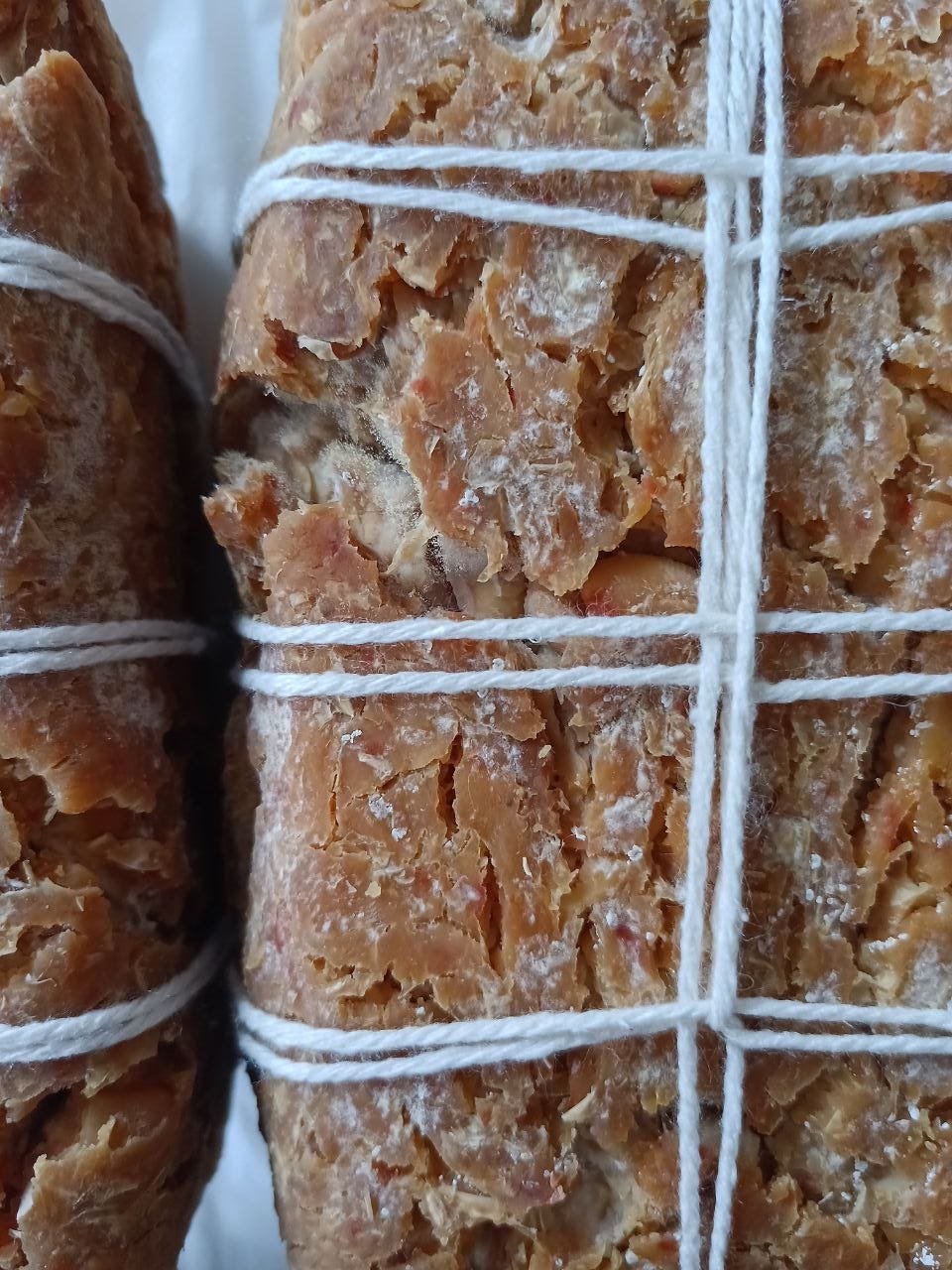
Step 6
After six weeks have passed, the meju blocks should be placed in a cardboard box with a bed of straw and should sit for another 2 weeks. This is to ensure that the correct bacteria and mold innoculate the blocks—in my case, I still plan on letting them rest in the straw even though my meju already has some koji mold growing on it. You will see some signs of mold growth on the outside of the meju blocks—white, green, and greenish-yellow should all be within the range of normal, and the meju blocks will smell quite pungent if you give them a sniff. Toss if it starts to develop black or green-blue mold. After two weeks hanging out in the straw, hang it up again in your well-ventilated space and let it go for another month. Your meju blocks should now be fully dried and ready to be turned into doenjang or gochujang. Store them in a well-ventilated, dry area for future use. Future doenjang and gochujang recipes to come, if all goes well with my current batch.
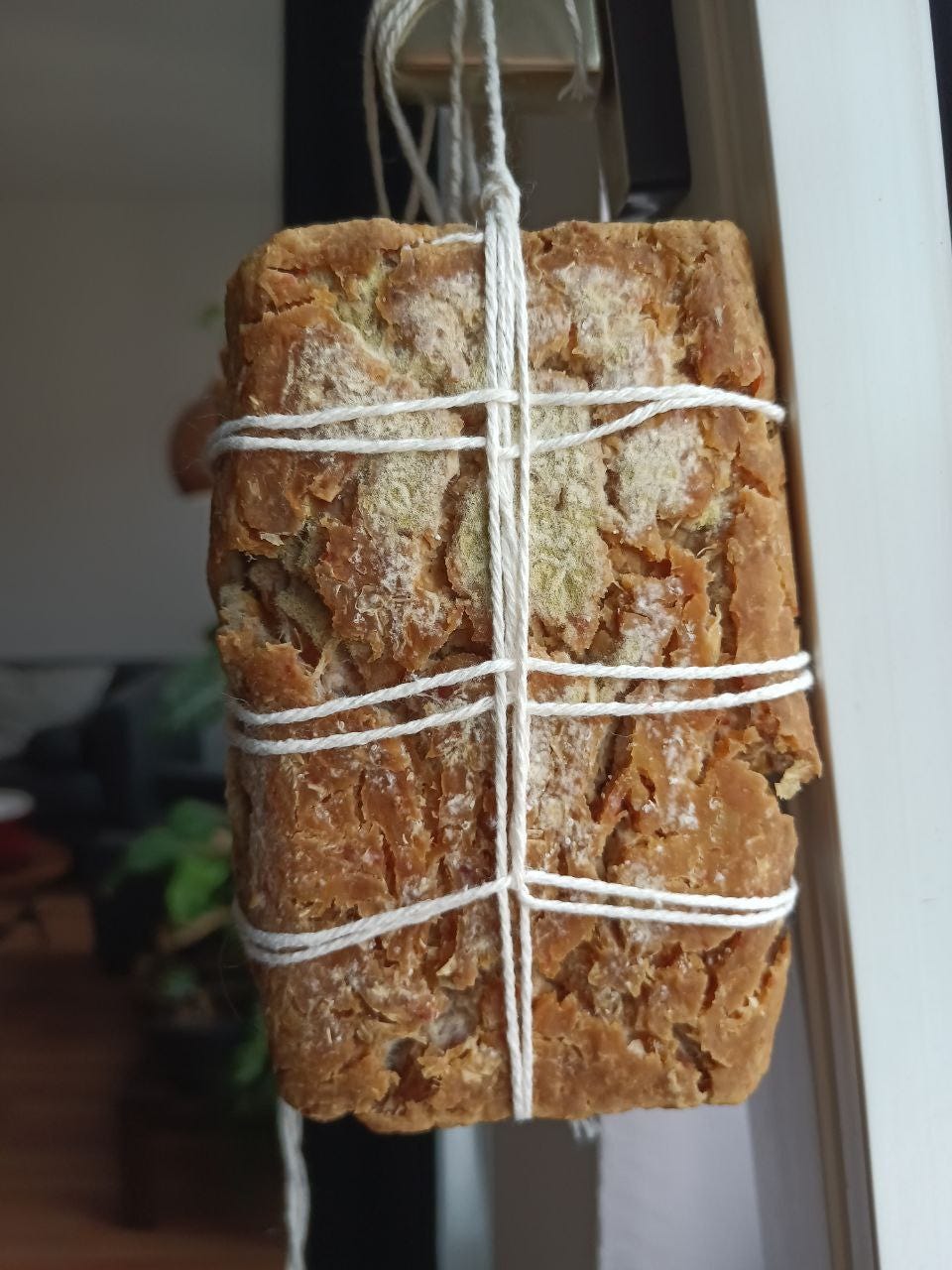
That’s it for now! Thanks for reading.
Polly


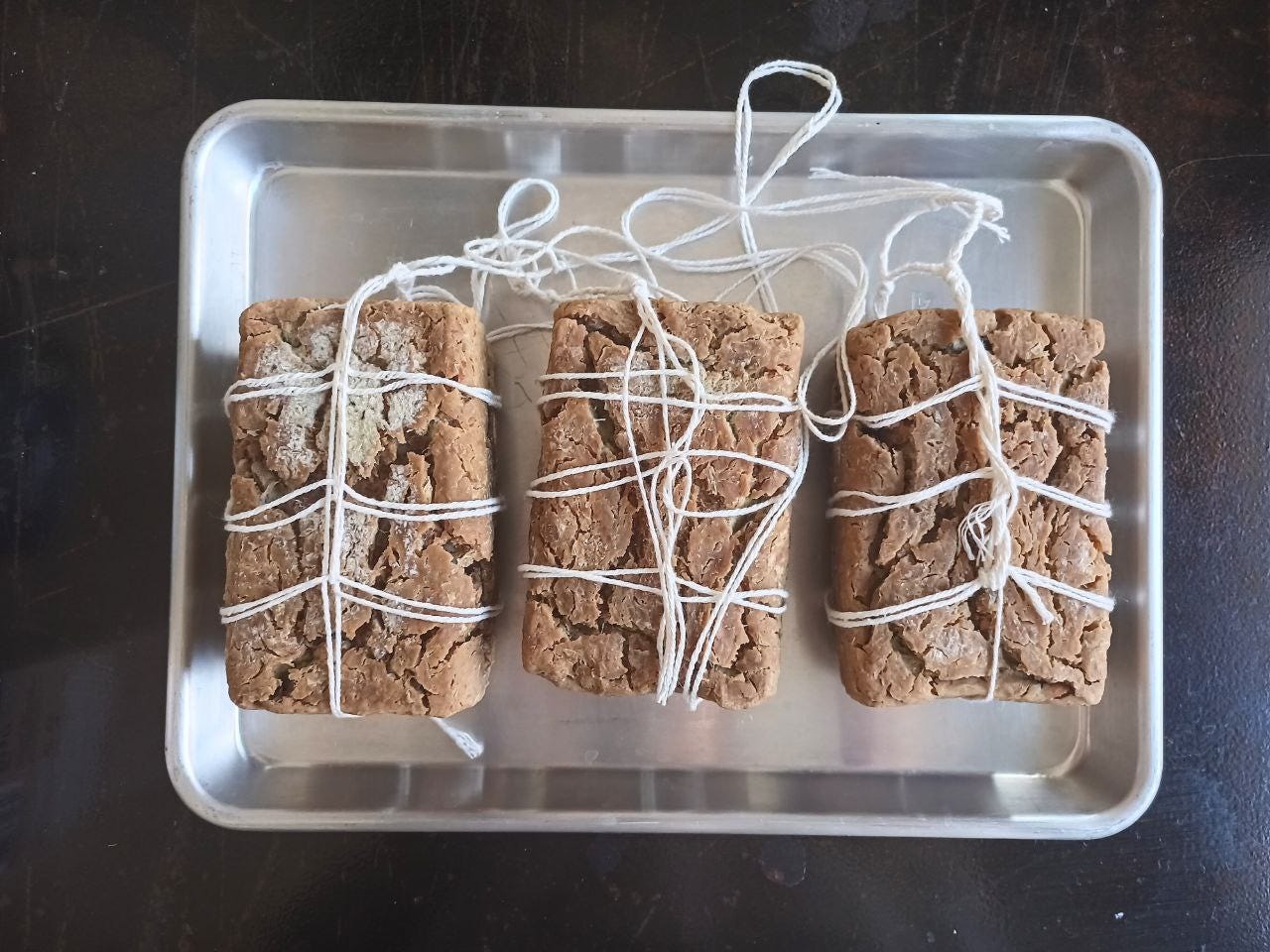
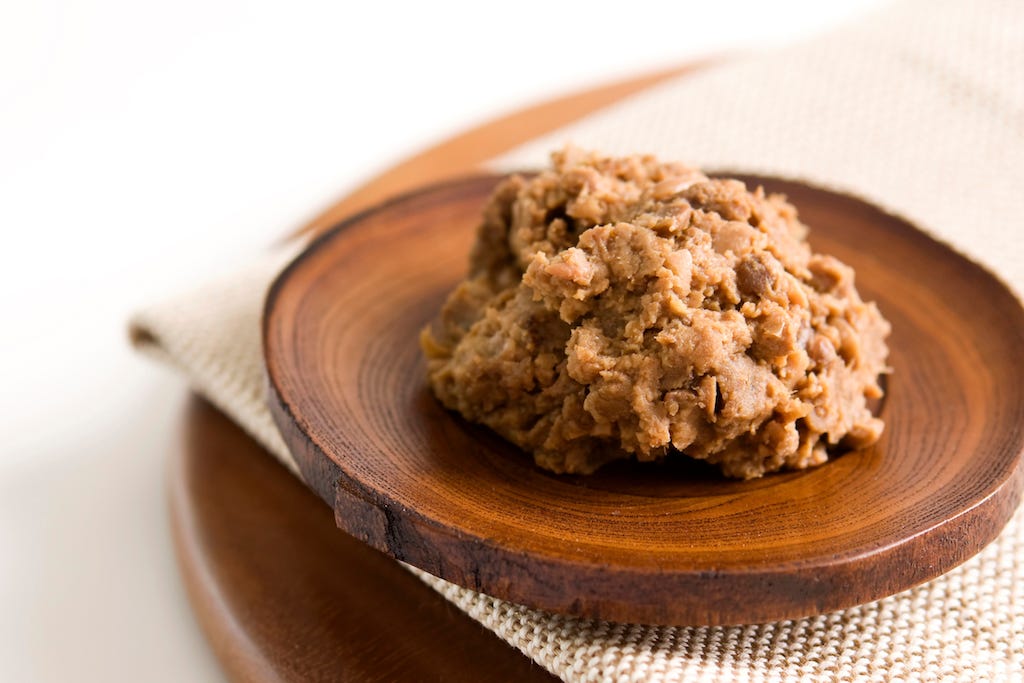
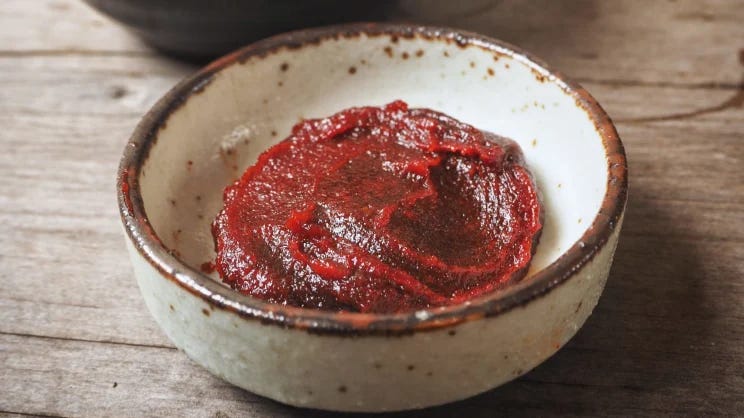
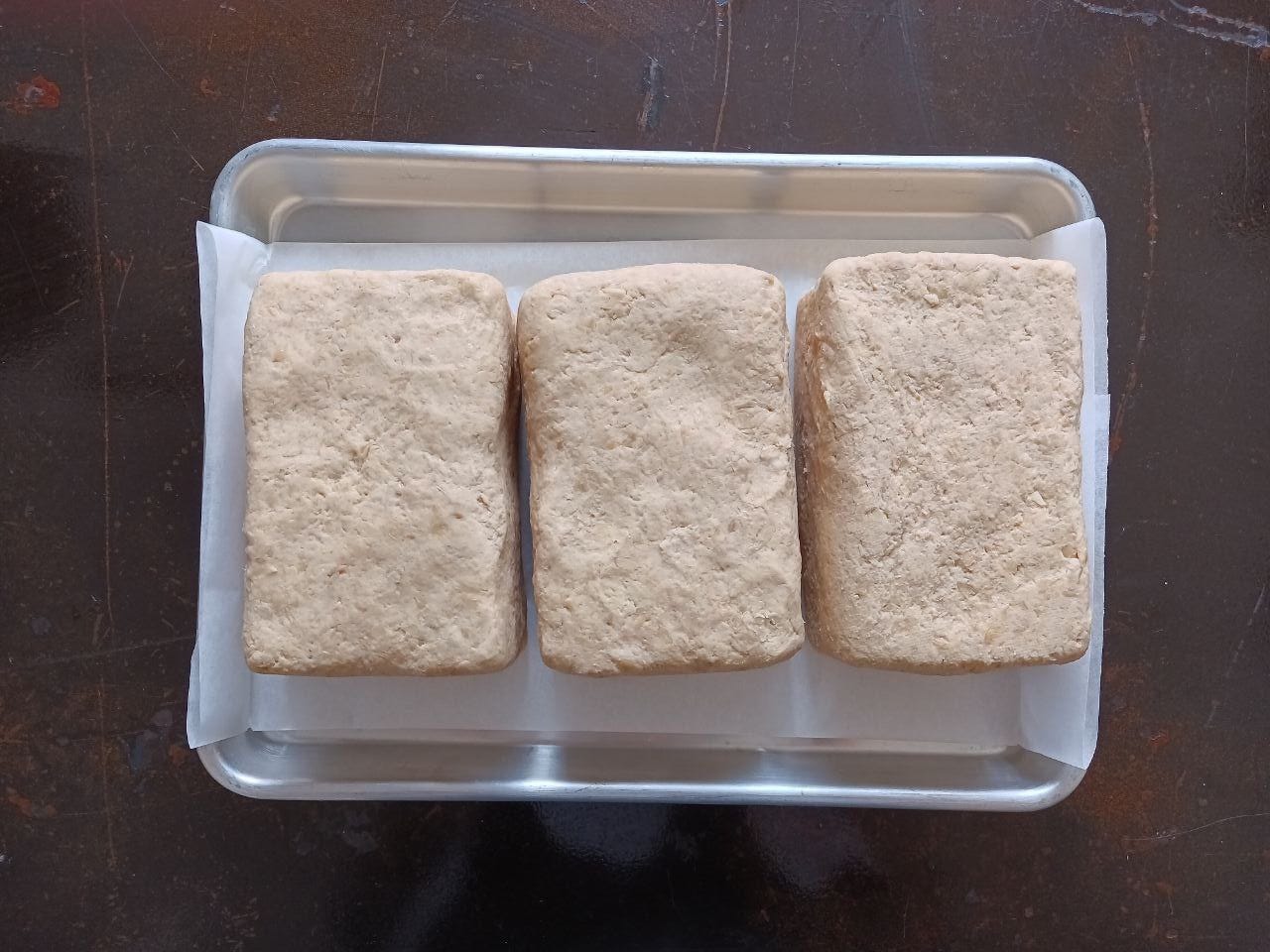
Wow super cool. Thanks for detailing the process. I guess I won’t be making it any time soon as we’re in the tropics so maybe not suitable!
This is pretty comprehensive. I like the idea of drying in a box where koji was previously grown. Somewhere i saw it suggested to add some natto to the soya beans to promote bacillus subtilis growth. Think that is a good idea? My first attempt smells very strong after a week. Not a good smell. Sort of urine-like if i’m honest. I wonder if it was too moist during the initial heat mat drying phase…